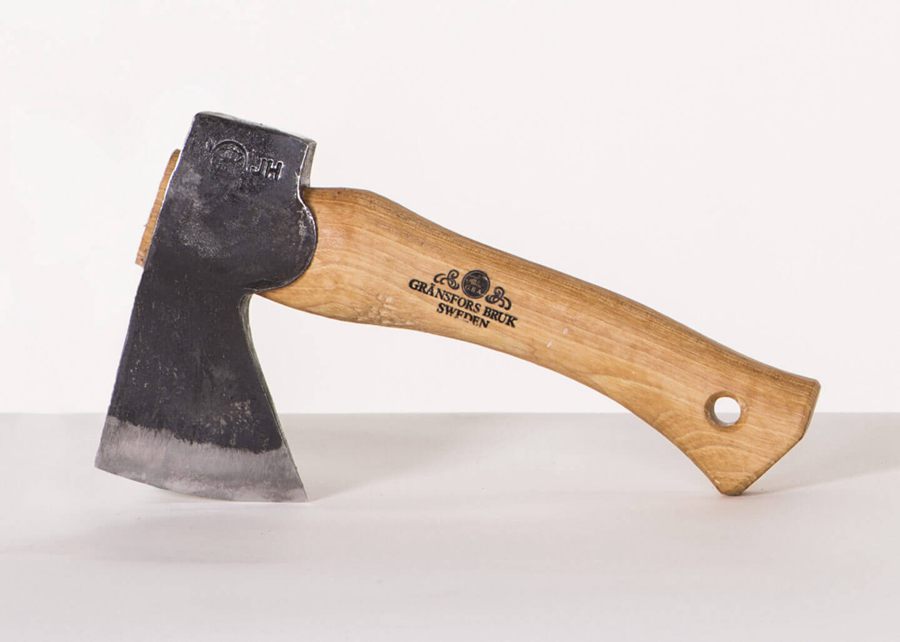Antique broad axes hold a special place in the hearts of collectors, history enthusiasts, and tool aficionados. As you embark on your journey of unearthing the fascinating history of these versatile tools, this guide will help you identify and value antique broad axes so you can build an impressive collection and appraise each piece accurately.
When examining antique broad axes, pay close attention to their physical characteristics, such as the blade thickness, handle length, and presence of any etched patent numbers or logos. Are you looking at a 1900s broad axe? If you see a 4-5mm thick steel blade with sharp, tempered edges and a long handle of about 16-17 inches, you’re on the right track. These axes typically range in value from $100 to $300, depending on their condition and branding.
As you dive deeper into the various types and subcategories of antique axes, you’ll quickly discover that broad axes are just the tip of the iceberg. There are many other valuable vintage axes out there, such as double-bit axes, felling axes, vintage splitting mauls, Hudson Bay axes, and more. Explore these different types and increase your expertise in identifying treasures from the past.
Table of Contents
The History & Evolution of Antique Broad Axes
The broad axe is a versatile tool that has been used extensively throughout history. Its main purpose was for hewing or squaring logs and timbers, making it essential for woodworking and building construction. As you dive deeper into the history and evolution of antique broad axes, you’ll discover the various designs and adaptations that have emerged over time.
In ancient civilizations, the first broad axes were made from stone or bronze. These early tools served a dual purpose: as a tool for woodworking and as a weapon in battles. As your research continues into the Middle Ages, you’ll come across the development of steel broad axes with a single, sharp blade on one side, and a flat poll on the other. This design allowed craftsmen to efficiently hew logs to create the foundations for buildings.
Over time, different regions around the world developed their variations of the broad axe. For example, the European broad axe featured a more prolonged, narrower, and slightly curved blade, while the American broad axe consisted of a broader cutting edge descending below the eye. These regional distinctions in design ultimately impacted their effectiveness in woodworking tasks.
As the industrial revolution progressed, and more advanced machinery became available, there was a decline in the use of broad axes for general construction. However, they remain popular with enthusiasts and collectors today for their historical significance and craftsmanship.
When identifying and pricing antique broad axes, consider the following factors:
- Material: The type of metal used (e.g., bronze, iron, or steel)
- Age: Estimated time of production or use
- Origin: The geographical location where the axe was made
- Condition: The tool’s overall state, including signs of wear and tear
- Rarity: How common or unique the particular broad axe is
By considering the history, design evolution, and identifying factors of antique broad axes, you’ll become more knowledgeable about these fascinating tools and their role in shaping civilizations across the centuries.
Types of Antique Broad Axe and Their Values
Single Bevel Broad Axes

Single bevel broad axes are versatile tools with one beveled edge, making them perfect for hewing logs and shaping timbers. These axes usually have an ash, maple, or cherry wood handle for durability. When looking for a single bevel antique broad axe, check for the blade material (iron, brass, or stone), as it determines its value. Handles made from ash, maple, or cherry wood are preferable, which also contribute to the value of the axe.
Double Bevel Broad Axes
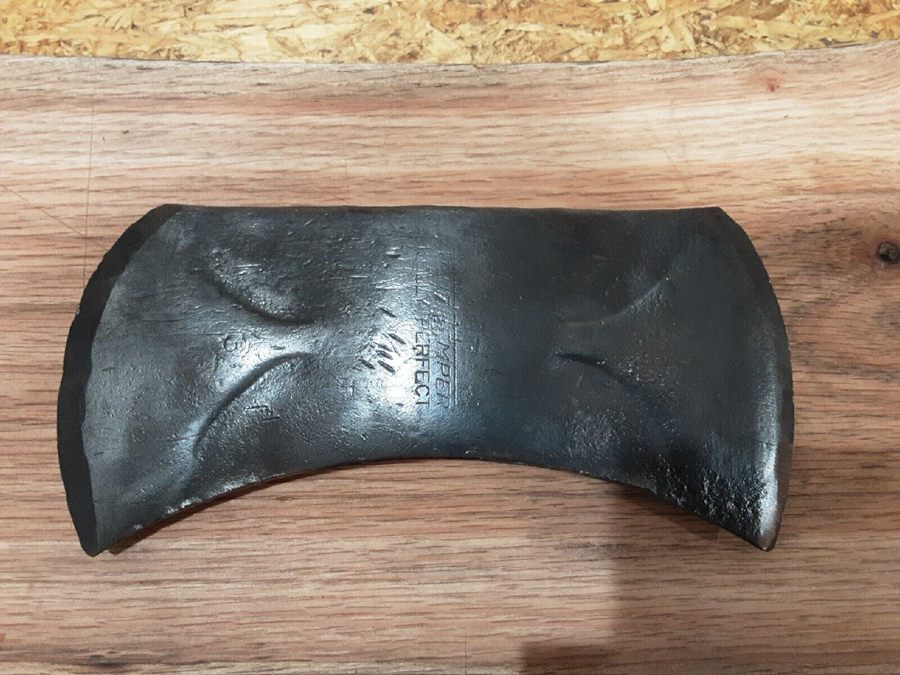
Double bevel broad axes have two beveled edges, making them highly sought-after for their versatility and rarity. They are generally more expensive than single bevel axes. When valuing a double-bevel antique broad axe, consider both the blade material and handle type.
American Felling Axes
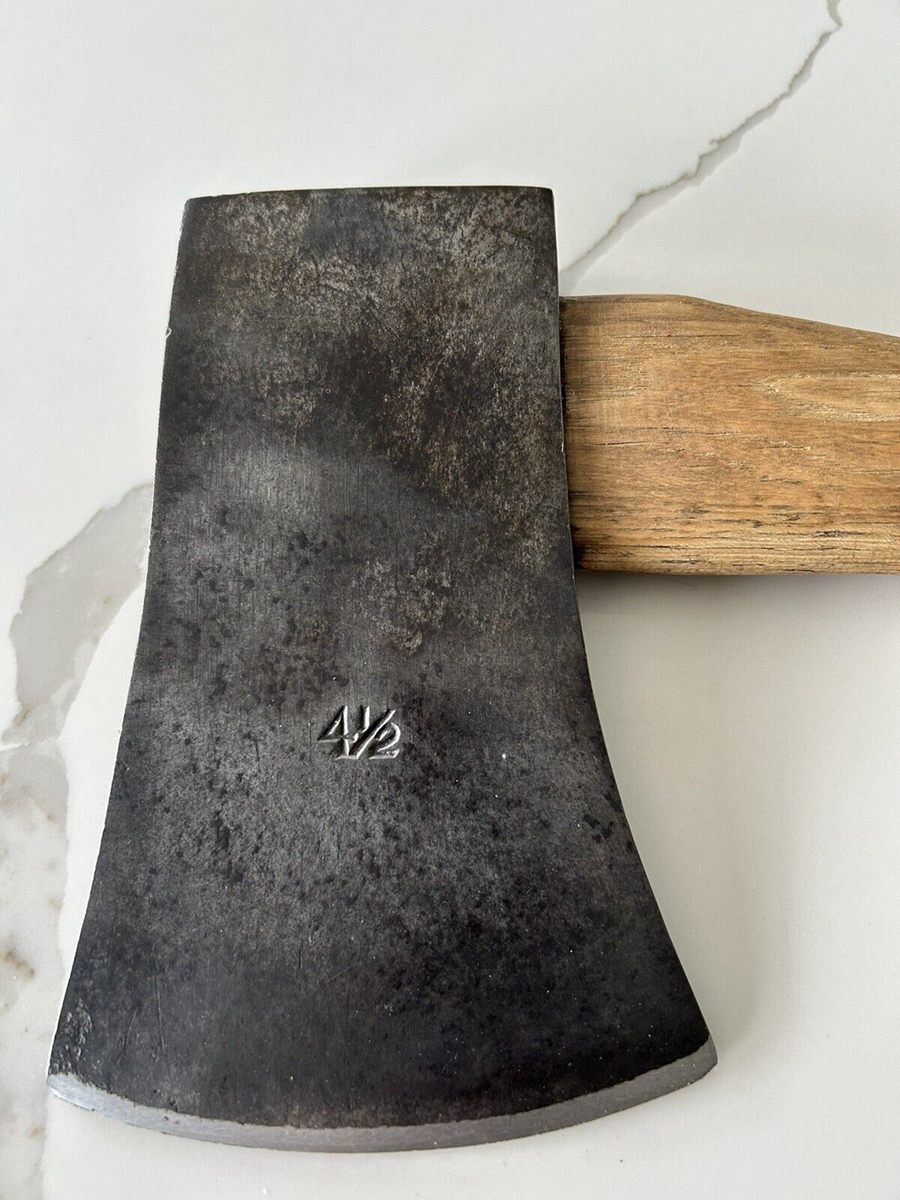
American felling axes are designed for chopping down trees and are known for their light and slim build, making them easier to handle. Look for an iron head with a wooden handle to maximize their antique value.
Mortising Axes
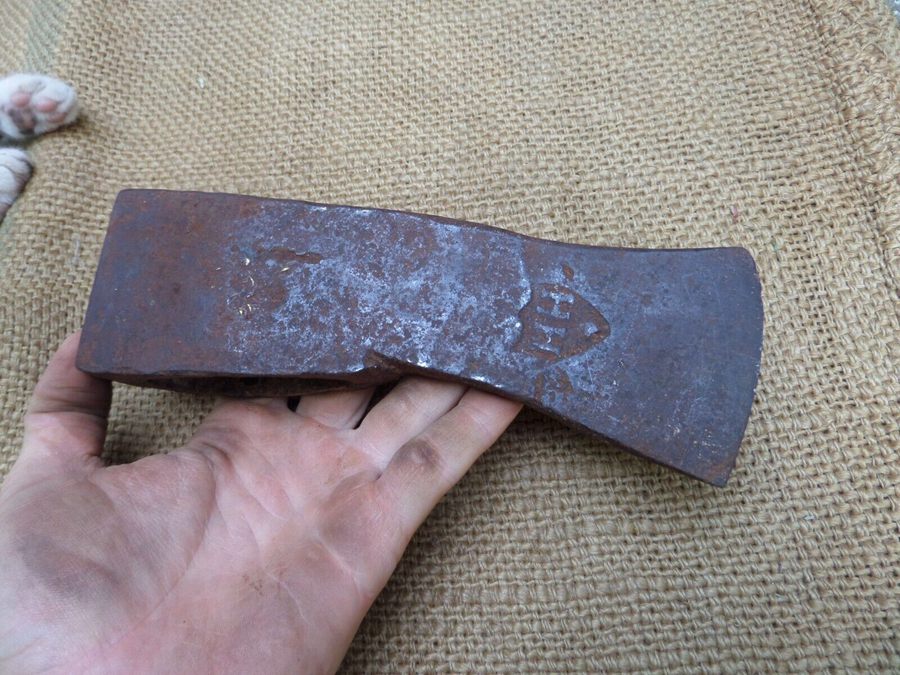
Mortising axes are specifically designed for timber framing, with a chisel-like blade perfect for creating mortise and tenon joints. Principally made of cast steel, their value lies in their historical significance and craftsmanship.
Ice Axes

Ice axes have a unique design with a spike for stability on ice and a pick on one end to assist in climbing frozen surfaces. Antique ice axes are often valued for their brass blade and combination of functionality and historical significance.
Hudson Bay Axes
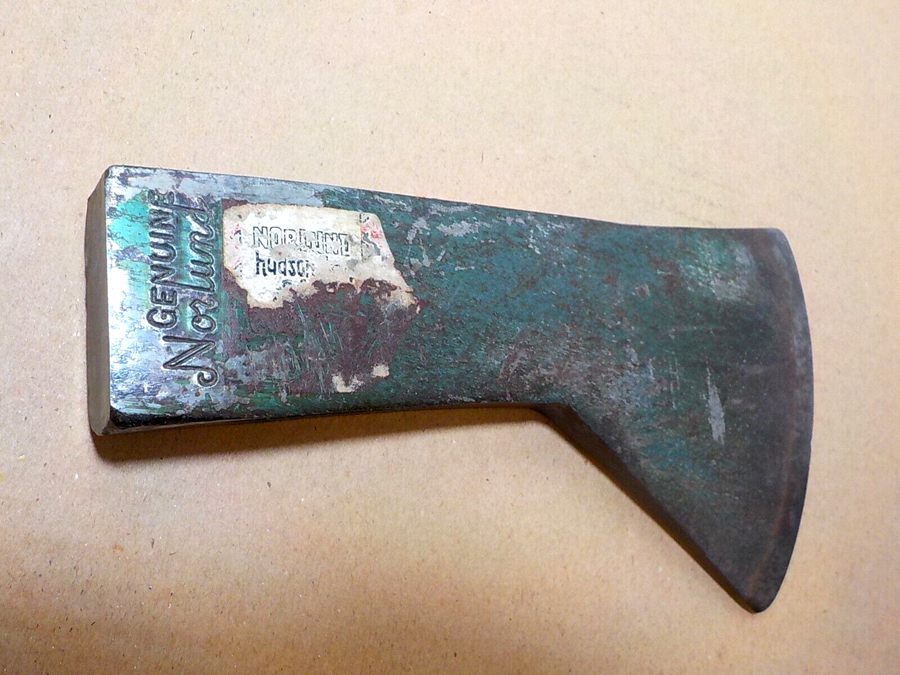
Hudson Bay axes have a distinct shape with a short, wide blade, traditionally used for trade with Indigenous peoples in North America. Their historical significance and scarcity make these axes valuable to collectors.
Viking Axes
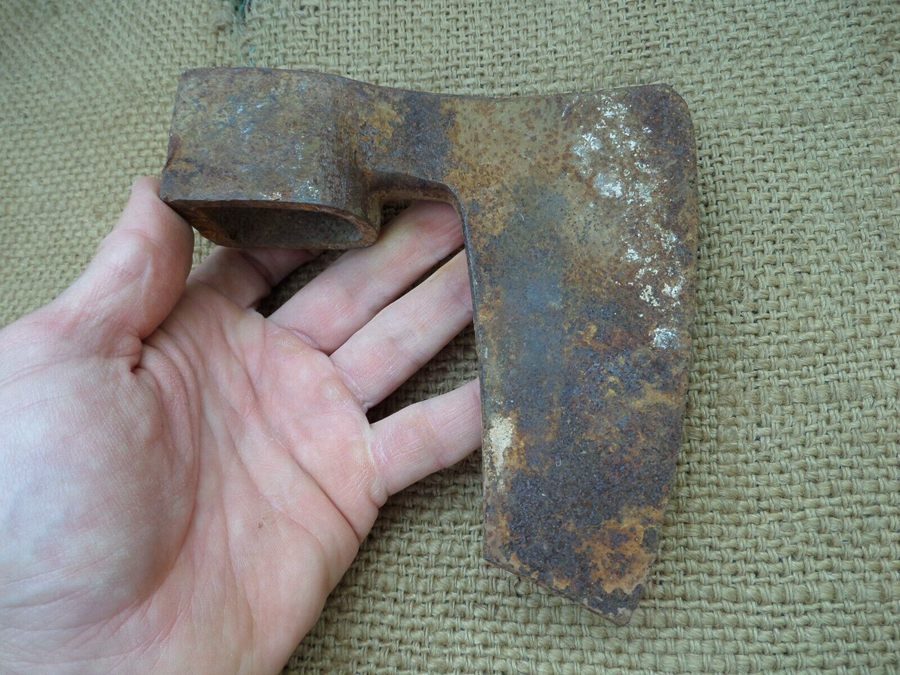
Viking axes have a distinct bearded design and were used for both chopping wood and as a weapon. Their historical context and rarity make them highly valuable.
Grub Axes
Grub axes are designed for clear woodlands and chopping roots, featuring a lightweight, short handle. Made from iron, these axes have a single bevel blade and maintain their value due to their unique design.
6 Factors to Identify & Value Antique Broad Axes
1. Antique Broad Axe’s Age Affects
As a collector, you’ll want to focuses on factors like the date of manufacture, material composition, and overall condition. Let’s examine some of the key aspects that affect an antique broad axe’s value.
Dating Your Antique Broad Axe
One method to determine the age range is checking the presence of patent numbers or logos. Axes made in the 1900s typically have 4-5mm steel blades with sharp, tempered edges and long handles measuring about 16-17 inches. These 1900 axes often feature branding and may bear etched patent numbers or logos. In the late 1800s, axe makers started transitioning from two-piece (iron body, steel blade) construction to cast-process steel.
| Factor | Average Valuation |
|---|---|
| Age | $100 – 300 |
| Usage | $70 – 80 |
| Rarity | $350 – 500 |
- Age: Broad axes from the 1900s with patent numbers or logos often command higher prices than those made earlier.
- Usage: The condition of the axe head is critical, with cracks, mushrooming, worn down toe or heel, and warped eye potentially reducing its value.
- Rarity: Axes that are considered rare and hard-to-find tend to have a higher value.
2. Antique Broad Axe Brands
Collectors often seek out specific brands due to their superior materials, craftsmanship, or historical significance. Brands like Kangaroo and D. Drake command higher prices due to their high-quality construction and polished appearance. These branded axes typically increase the broad axe value by 20 to 25%. In addition, they provide exceptional cutting edges and heels for easy chopping.
Here are some examples of well-known antique broad axe brands and their average valuations:
| Antique Broad Axe Brands | Average Valuation |
|---|---|
| Kangaroo | $400 – $500 |
| D. Drake | $450 – $550 |
| Cast Steel | $350 – $450 |
| Kelly Axe and Tool Works | $300 – $400 |
It’s worth noting that the axe’s overall condition also influences its value. Inspect the axe head for cracks, as these can significantly reduce the value. Mushrooming of the poll implies the axe has been used for hammering other metal objects, which is undesirable. Also, double-check that the toe or heel isn’t excessively worn down and the eye isn’t distorted.
3. Antique Broad Axe Functional Use
Antique broad axes have different functional uses which greatly affect their identification and value. Understanding these uses will help you determine the type of broad axe you have and its potential worth.
Historically, broad axes were designed for two main purposes: hewing logs for timber framing, and shaping wood for boats or other woodworking tasks. These two functional uses resulted in two types of broad axes: single bevel and double bevel.
Single Bevel Broad Axe
A single bevel broad axe has a flat side and a chiseled edge side. These axes were primarily used for hewing logs – squaring off rounded timber. The user would swing the axe along the length of the log, cutting a smooth and even surface. Single bevel broad axes require high skill to use effectively and often command a higher value due to their specialized purpose.
| Functional Use | Average Valuation |
|---|---|
| Hewing Logs | $350 – 450 |
| Woodworking Tasks | $250 – 350 |
Double Bevel Broad Axe
A double bevel broad axe has a chiseled edge on both sides. This type of axe is designed for shaping wood in various woodworking tasks, such as creating flat surfaces on logs or planks. Double bevel broad axes are more versatile, making them less specialized and often valued at a lower price.
| Functional Use | Average Valuation |
|---|---|
| Hewing Logs | $200 – 300 |
| Woodworking Tasks | $100 – 200 |
Keep in mind that the average price given is true for well-preserved axes. The value of antique broad axes can greatly differ depending on factors like condition, age, and manufacturer. Providing specific valuations for every possible combination is impossible; however, the tables above serve as a rough guide for understanding how the functional use and type of antique broad axe can affect their value.
4. Vintage Broadaxe Handle’s Handle
A well-preserved handle not only adds to the visual appeal but also affects the overall performance of the tool when used. Understanding the various factors that influence the value of a vintage broadaxe handle can help you determine the worth of the item.
There are several factors to consider when evaluating the handle:
- Material: Broadaxe handles were typically made of wood, with hickory being the most common choice due to its strength and resilience. The type of wood used can impact the value of the broadaxe.
- Condition: If the handle is in good condition with minimal wear or damage, it can increase the value of the tool. On the other hand, a cracked or broken handle can reduce the value significantly.
- Carvings and Artwork: Some broadaxe handles feature intricate carvings, patterns, or even painted artwork, which can increase the value if they are well preserved and visually appealing.
Here is a table to give you an idea of the average value depending on the factors discussed:
| Factors | Average Valuation |
|---|---|
| Hickory Handle, Good Condition | $350 – $450 |
| Hickory Handle, Poor Condition | $200 – $250 |
| Other Wood, Good Condition | $300 – $400 |
| Other Wood, Poor Condition | $150 – $200 |
| Handle with Carvings or Artwork | $400 – $550 |
In summary, the quality, material, and any additional features of a vintage broadaxe handle can impact its identification and value. By keeping these factors in mind, you’ll be better equipped to accurately determine the worth of your antique broadaxe.
5. Antique Broad Axe Size and Weight
Broad axes can vary in size, with blade widths ranging from 4-5mm and handle lengths of 16-17 inches. Weight is also a contributing factor in determining the value of antique broad axes since it can impact their intended use and overall effectiveness.
Size and weight can influence the purpose of the broad axe. For example, felling axes typically have a head that weighs between two and four pounds and a long handle. This large handle provides greater leverage and a more powerful swing, resulting in a superior cut. Conversely, hewing axes, also known as broad axes, are used to shape wood into beams and other shapes for construction, making a lighter weight and more precise cutting surface essential.
Here’s a table that outlines the average valuation based on antique broad axe size and weight:
| Size and Weight Factor | Average Valuation |
|---|---|
| 4-5mm steel blade, 2-4 lbs head weight, 16-17″ handle | $100 – $300 |
When examining antique broad axes, it’s crucial to consider the specifics of the steel blades and tempered edges. Look for etched patent numbers or logos, as these can also help verify the age and authenticity. And don’t forget to take note of the type of wood used for the handle; traditionally, hickory wood is common due to its sturdiness.
6. Antique Broadaxe Colors
There are typically two main colors found in old broad axes – bare wood and oxidized. Let’s take a look at how these different color variations can influence the value and identification of antique broad axes.
Bare wood or stained wood axes are often more valuable due to their well-preserved original state. These axes showcase the material’s natural beauty and craftsmanship, making them highly sought after by collectors. The average valuation for a bare or stained wood axe can range from $300 to $400.
| Antique Broadaxe Color | Average Valuation |
|---|---|
| Bare or Stained Wood | $300 – 400 |
On the other hand, oxidized axes have undergone a chemical reaction, resulting in coloration changes, typically to white, black, or brown hues. While this oxidation can lend a rustic, time-worn appearance to the axe, it also denotes a level of wear and aging that may reduce the overall value. Oxidized axes are generally cheaper, with valuations usually reaching up to $200.
| Antique Broadaxe Color | Average Valuation |
|---|---|
| Oxidized (white, black, or brown) | $200 |
Final Thoughts
When identifying antique broad axes, it’s essential to examine their features and characteristics. Pay attention to the style, shape, markings, and materials from which they are made:
- Single-bevel axes: These axes have one flat and one chiseled edge, a wider one-side swing, and a curved handle for a better grip. They tend to have rough, bog-iron edges and fired blades, and are valued at $200-300.
- Double Bevel Broad Axe: This type of axe has two chiseled edges, providing a more symmetrical swing.
- Halberd axe heads: This medieval weapon is characterized by a long, curved blade with a sharp point on the top and a hook or spike on the rear side of the head.
Research the history and materials of your broad axe, particularly when it comes to the transition from wrought iron to cast-process steel, which became more widely available and affordable in the late 1800s. Some of these axes may have the “cast steel” moniker, signifying their quality.
Don’t forget to consider the purpose of broad axes, such as hewing – turning round-edged lumber into flat-edged timber. This knowledge is especially crucial for understanding the value and rarity of these axes before the advent of industrial sawmills.
Finally, beware of damaged or broken axes. Damage to essential parts of the axe, such as the poll, can significantly affect its value. It may also obscure vital information, like maker’s marks, that could provide insight into the axe’s origins and history.
Good luck with your exploration of antique broad axes. With careful observation, research, and attention to detail, you’re well on your way to discovering fascinating axes with historical significance and value.
FAQ
How can you identify an antique broad axe from the 1900s?
To spot old broad axes from the 1900s, check if your broad axe has 4-5mm steel blades with sharp, tempered edges. Also, measure your axe’s handle – if it’s long, about 16-17 inches, it’s likely from the 1900s. You might even notice etched patent numbers or logos on some of these broad axes, as many are branded.
What is the general price range for antique broad axes?
Antique broad axes typically cost between $100 and $300, depending on factors such as age, condition, rarity, and branding. The following aspects can influence the value of a broad axe:
- Condition: Well-preserved axes with minimal damage and intact handles are more valuable.
- Rarity: Unique or rare designs fetch higher prices.
- Brand: Axes with recognizable branding or etched markings from renowned manufacturers are more valuable.
How can you differentiate between a hewing axe and a broad axe?
A hewing axe, also known as a broad axe, is used to shape wood into beams and other forms for construction. Its head has a broad, sharp blade with either a single bevel or a double bevel and is typically swung like a mallet to remove wood from the surface of a log. So, if you have an axe with these features, you have a broad or hewing axe.
What is the main use of a broad axe in woodworking?
Broad axes, or hewing axes, were primarily used to convert round-edged lumber into flat-edged timber before the advent of industrial sawmills. This process, known as hewing, played a significant role in wood processing and construction.
What should you look for when detecting antique axes buried underground?
When using a metal detector to find antique axes, keep in mind that not all axes you discover will be antiques. Antique axes were fashioned by wrapping hot iron around a form to shape the axe’s eye. Being familiar with this method can help in determining if an axe is truly an antique.


